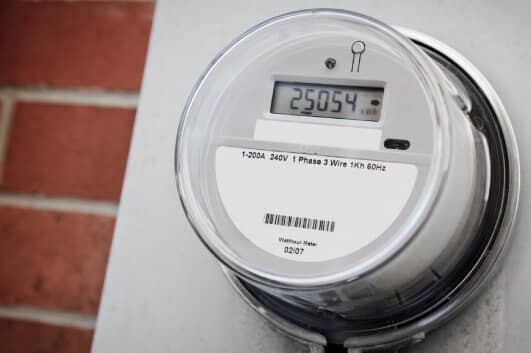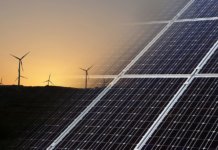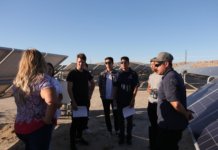Connected devices are ushering in a new age. For the electric power sector, one such device is the smart meter – a building block for realizing the benefits of Internet of Things (IoT) technologies. A replacement for its predecessor, the electro-mechanical analog meter, digital smart meters are, at their core, devices that record the amount of energy consumers use in their homes. Secure wireless technology allows these meters to send this information back to electric utilities for calculating monthly electric bills.
Today, more than 65 million smart meters have been installed in homes across the U.S., about half of all existing homes. Utilities can provide homeowners with real-time access to their overall energy use, even making it available through personal devices, with these smart meters.
Smart meters also allow the ability to digitally collect and measure time-of-use data, helping electric utilities to better anticipate peak energy consumption hours. In addition, electric utilities can shift residences from grid to stored solar power during those peaks to offset high energy costs. As residential rate structures move to “time-of-use” pricing, solar may play an increasing role in the mix of energy sources that serve customers.
Moreover, when utilities reach their mid-day energy demand peak during the summer, smart meters can help monitor and provide real-time data to measure total electricity used, enabling the adjustment of grid usage based upon how much solar electricity is being generated by a residence. In addition, utilities can now send signals (with permission) to select customers to turn down or off air-conditioning compressors for a short burst, reducing demand below current generating capacity – all in an effort to make the electric grid safer, more secure, more reliable and more cost-effective.
Interoperability For Smart Meters Is Key
To realize the advantages of smart meters, the interoperability of these devices is critical to their effectiveness and ability to function, and utilities need to establish expectations for the compatibility of devices to support wide deployment and adoption.
Utilities should ensure that the data and information sent out to and from the meters follows a certain format and protocol. This procedure is vital because it pertains to charging people accurately for the energy they use and reporting that reading in an intelligible way back to the system. Considering the specific application of the device and how the technology could be altered if it interacts with another piece of smart technology or system is critical to successful interoperability.
Market demand for smart meter technology has grown substantially. As a result, many manufacturers are working hard to design, build and sell smart meters into the market. Thus, a relatively new standard – IEEE 2030.5 – has emerged as one of the most relevant and applicable sets of requirements to safeguard this two-way communication.
At UL, we test for interoperability by sending IEEE 2030.5-compliant messages to the smart meter to capture the responses. For instance, a message to turn a device off will be sent, and a technician will watch to see if an answer comes back. If it does, UL knows the device can “speak” IEEE 2030.5 with other devices.
In addition, UL engineers are currently preparing a new environment to test whether two or more devices that can effectively communicate with each other by monitoring the “discussion” to address device interoperability.
The Future Of Smart Meters
In the near future, utilities could potentially position smart meters as a hub to connect and talk with all sorts of IoT devices, solar PV technologies and sensors at customer locations.
As smart meters become ubiquitous and more sophisticated, electric utilities will be able to offer customers a variety of new services. These include dynamic pricing; the integration of new energy resources such as microgrids and solar power; and improved outage management and restoration. Smart meters also could hypothetically provide concierge services – for instance, managing the access necessary to perform work at customer homes such as replacing a solar panel or removing a tree limb resting on a power line or roof.
As utilities use smart meters as their central IoT hub in customer locations, they will pave the way for changes to the utility service model, as well as changes to the mix of energy sources used by homeowners – a potential boon for solar power.
Ken Boyce is principal engineer director of energy and power technologies at UL LLC, a global safety consulting and certification company. Photo courtesy of UL.




